Because the first step to creating a subjunctive conjugation is to determine the
yo form of the regular present tense, any verb that is irregular in the
yo form of the present tense will carry that irregularity in all forms of the subjunctive present tense.
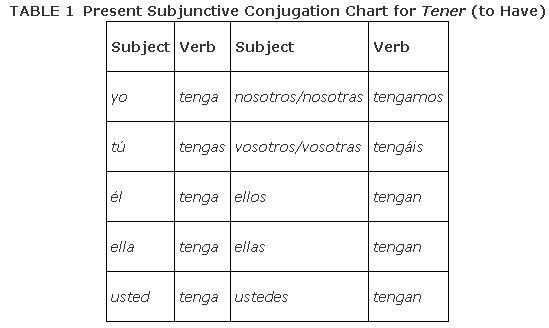
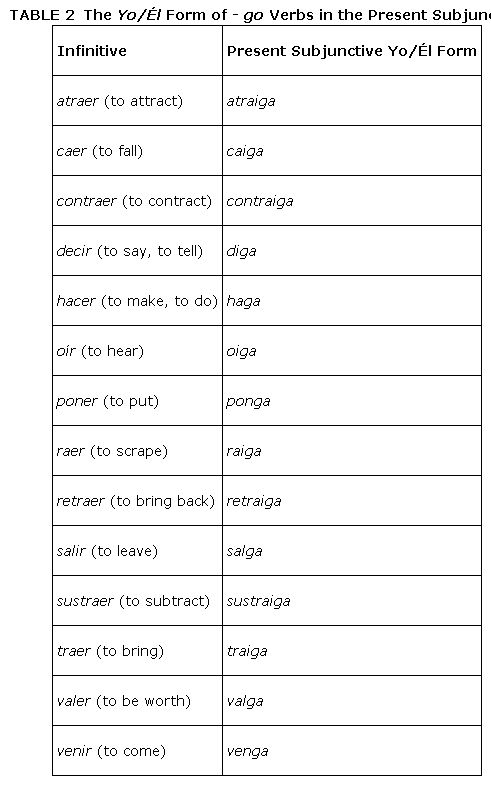
- zco verbs
In general, any verb that ends in a vowel followed by ‐cer or ‐cir will have a yo form that ends in ‐zco. Therefore, all forms of the present subjunctive for these verbs will reflect the yo form, as demonstrated in Table .
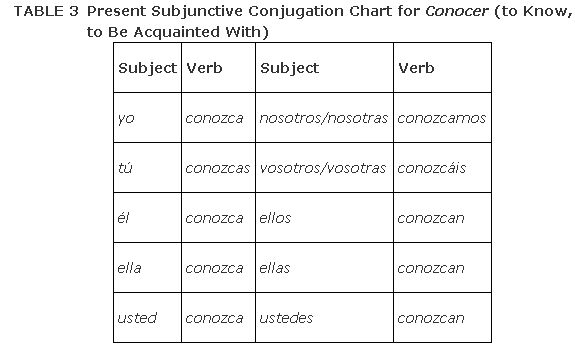
All the following verbs are conjugated like conocer with the ‐zca, ‐zcas, ‐zca, ‐zcamos, ‐zcáis, and ‐zcan endings. The present subjunctive yo/él form of each verb follows its translation in Table , below. The rest of the subjunctive endings follow the regular subjunctive ending patterns.
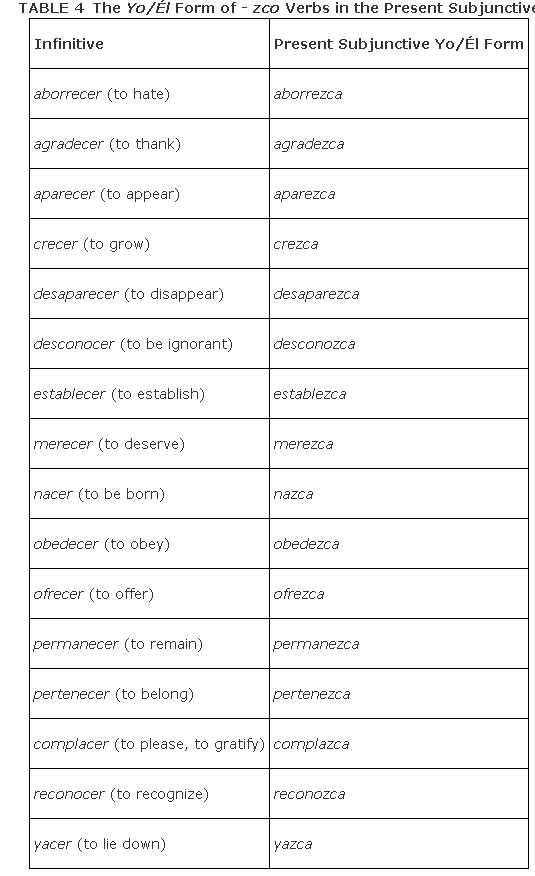
Table lists several verbs that end in ‐ucir. They also have ‐zca, ‐zcas, ‐zca, ‐zcamos, ‐zcáis, and ‐zcan endings. The present subjunctive yo/él form of each verb follows its translation.

- zo verbs
A verb that ends in a consonant followed by ‐cer has a yo form ending in ‐zo. Therefore, all forms of the present subjunctive for these verbs will reflect the yo form, as demonstrated in Table .
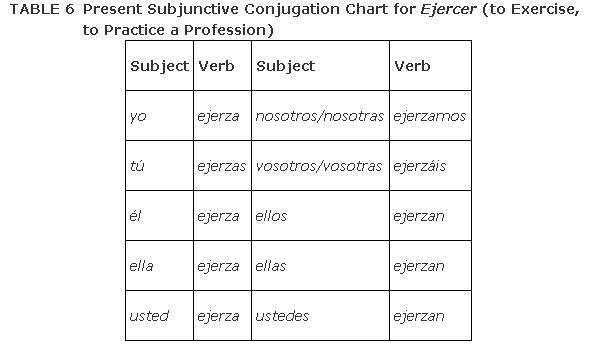
The verbs in Table are conjugated like ejercer with the ‐za, ‐zas, ‐za, ‐zamos, ‐záis, and ‐zan endings. The present subjunctive yo/él form of each verb follows its translation.
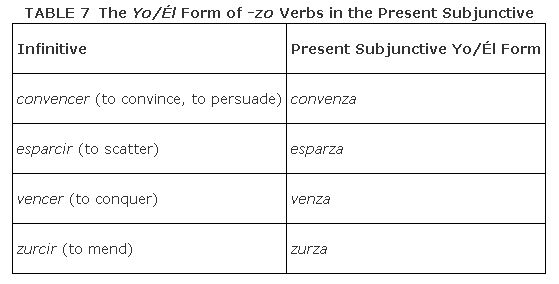
- gir verbs
A verb that ends in ‐gir in its infinitive form must change the g to j to maintain the soft g sound in all forms of the present subjunctive. Table presents the present subjunctive forms for the verb dirigir. All the other verbs ending in ‐gir are listed in Table .
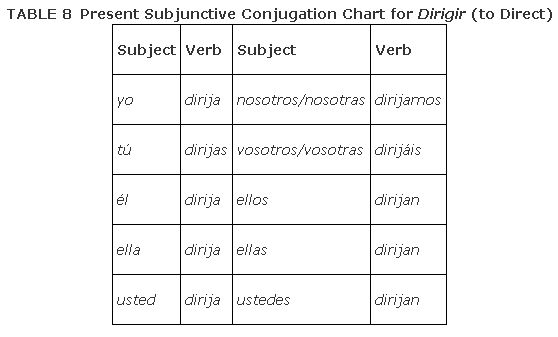
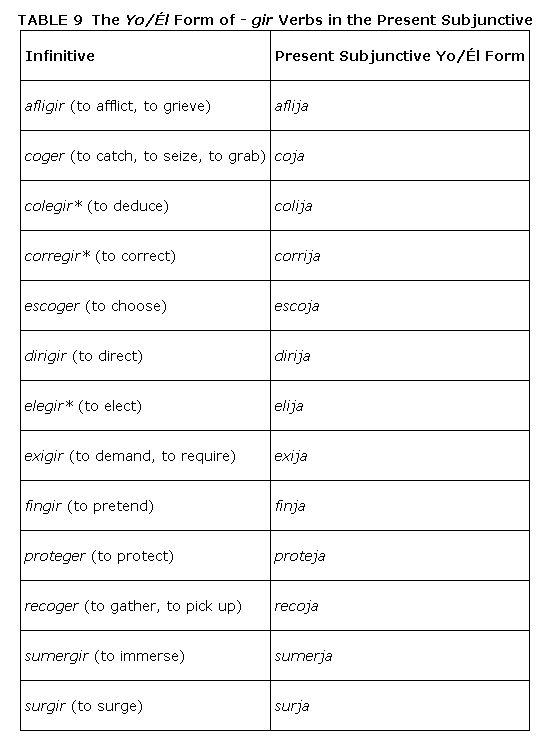
The verbs in the list below undergo a spelling change in every form of the subjunctive present tense. The verbs followed by an asterisk also undergo an e> i stem change in all forms.
-guir verbs
A verb that ends in ‐guir includes a u in its infinitive form only to attain a hard g sound. In all forms of the subjunctive, you must drop that u; because the g is now followed by an a, it is already pronounced hard. Table presents the present subjunctive forms for the verb seguir. All the other verbs ending in ‐guir are listed in Table . There is, however, one extra issue: Seguir is a stem‐changer, and the e changes to i in all forms of the present subjunctive.
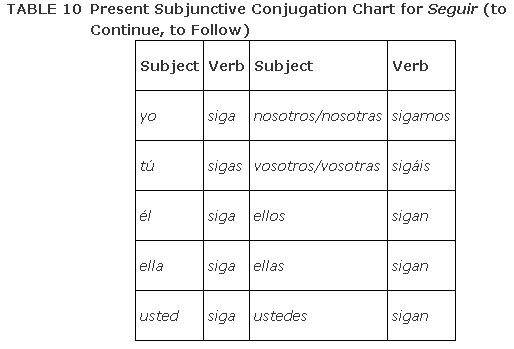
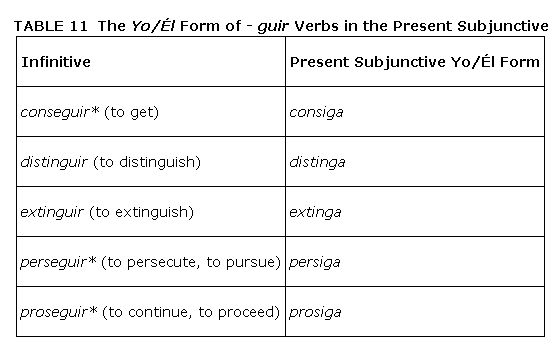
The verbs in Table drop the u in every form of the subjunctive present tense. The verbs followed by an asterisk also undergo an e> i stem change in all forms.
Any verb that ends in ‐uir (except ‐guir verbs) will have a y in front of the subjunctive ending for all forms.
All of the following verbs in Table are conjugated like contribuir with a y in front of the ending for every form.
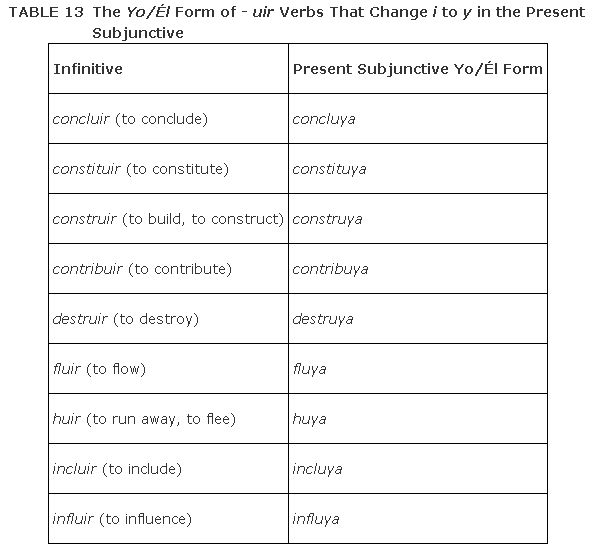
|
|
|
|
|
|
|
|
|
|
|
|
|
|
|
|
|
|
|
|
|
|
|
|
|
|
|
|
|
|
|
|
|
|
|
|
|
|
|
|
|
|
|
|
|
|
|
|
|
|
|
|
|
|
|
|
|